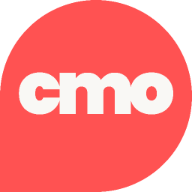As a CMO, you're likely fielding questions about AI's impact on your marketing investments. The good news? AI isn't killing search, but it is fundamentally changing how your customers discover and engage with your brand online.
New platforms like Perplexity and ChatGPT are giving customers faster access to direct answers, while Google's AI Overviews (AIOs) provide immediate responses without requiring clicks to websites.
These AI tools are creating more zero-click searches, which means lower clickthrough rates (CTRs) and reduced web traffic from traditional search engine result pages (SERPS) – metrics that likely matter to your performance dashboards.
But before you consider pivoting your entire search strategy, consider this: two and a half years after ChatGPT's launch threatened to upend search, Google remains dominant.
According to SparkToro's analysis, Google processes 373x more search queries than ChatGPT and grew search volume by 21.64% in 2024. All AI tools combined still represent less than 2% of the search market.
The opportunity for marketing leaders lies not in abandoning traditional search, but in expanding your strategy to capture high-intent audiences across both traditional and AI-powered channels.
While raw traffic numbers may shift, AI search tends to drive higher-value prospects – exactly the kind of qualified leads that justify marketing spend.
The revenue impact of AI-powered search
Several AI-powered experiences now compete for your customers' attention. Conversational LLMs like ChatGPT, Claude, and Gemini supplement their training data with web searches when needed (or requested).
Dedicated AI search engines like Perplexity were built specifically for searching the web.
Unlike traditional searches, conversational LLMs allow customers to ask follow-up questions, providing tailored answers that go much deeper than a traditional search results page.
Meanwhile, Google's AI Overviews provide direct, detailed answers at the top of search results.
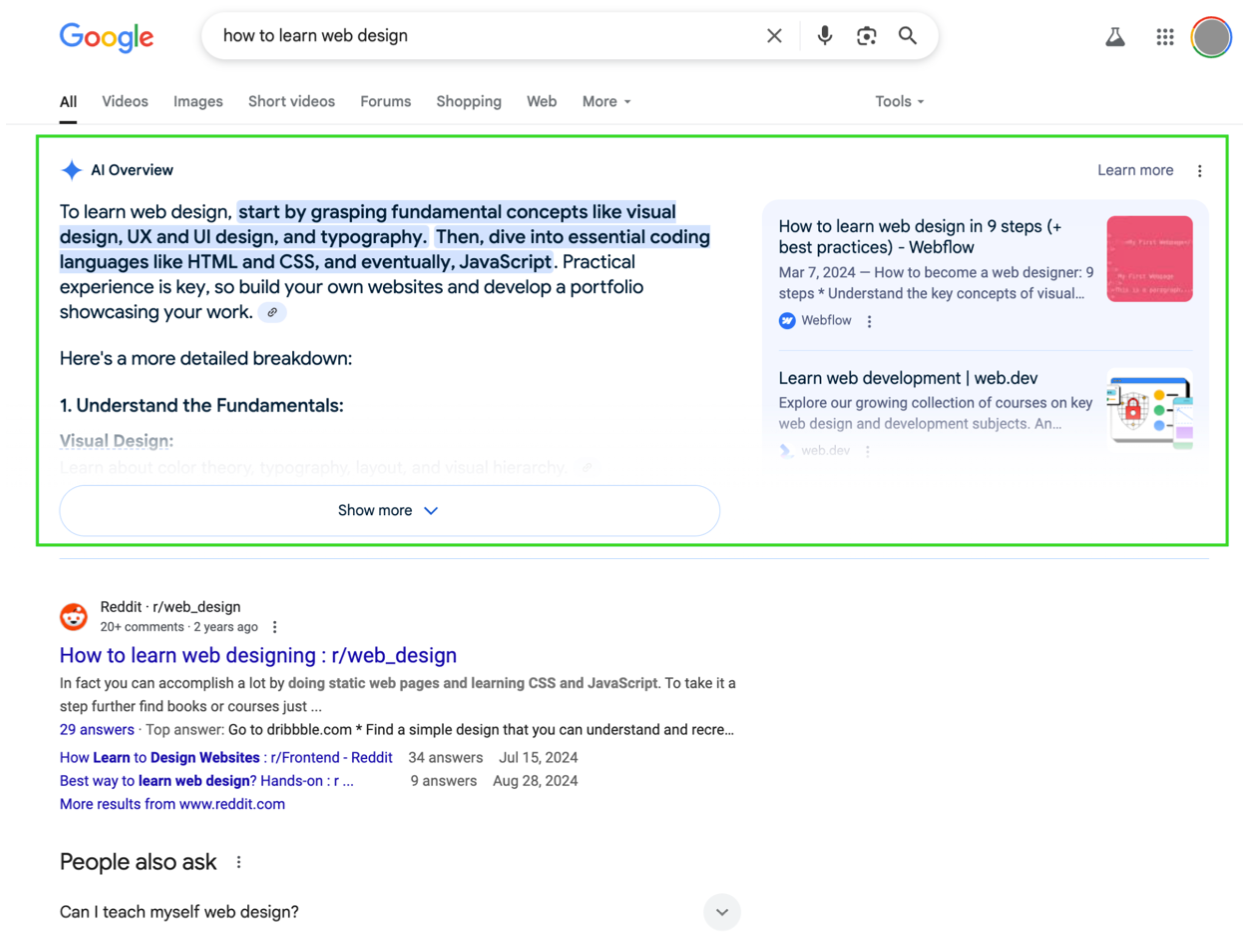
Critical for brand visibility, both Google's AI Overviews and LLMs provide citations and links to their sources – creating opportunities for brand awareness even without direct clicks.
Search traffic data trends provide signals for marketing budgets
When it comes to search traffic, AI platforms present a classic quality versus quantity trade-off.
Seer Interactive's research shows that AI Overviews decrease clickthrough rates by 70%, while paid search CTRs decrease by about 12%. However, AI search drives significantly higher-value traffic.
"This isn't a user who searched [for] a random keyword and accidentally clicked on your site," explains Alisa Scharf, Seer's VP of SEO and AI. "This is somebody who engaged in a conversation with an AI assistant about your product or services. So these are high-value users, and we want to pay attention to them."
As a marketing leader, this means rethinking traditional traffic-based success metrics. Brand visibility in AI searches – even without direct clicks – can significantly influence the customer journey and drive conversions through other channels.
The key is understanding how these AI platforms find, select, and cite sources, then positioning your brand to be the authoritative answer.
Answer engine optimization: Your next marketing capability
The marketing industry has spawned several terms for AI optimization, including LLM SEO, AI SEO, and GEO (generative engine optimization).
We'll use Answer Engine Optimization (AEO) as we explore what it means for your marketing strategy.
Building AEO into your marketing strategy
While traditional SEO focuses on ranking web pages in search results, AEO optimizes your content to appear in AI-generated responses, making your brand the source that AI systems cite when answering relevant queries.
To develop an effective AEO strategy, your team needs to understand where these platforms source their information:
- LLM training data includes vast datasets from web content, books, and partnerships with premium publishers.
- Real-time web searches supplement training data when LLMs need current information. Due to its Microsoft partnership, ChatGPT's web search function primarily pulls from Bing's search index.
- Google AI Overviews use real-time search data, with about half of cited pages ranking in the top ten for the search query.
For both LLM web searches and AIOs, certain sites are frequently cited: Wikipedia, YouTube, Reddit, and LinkedIn, along with authoritative industry sources (like Healthline or Nerdwallet).
AEO vs. SEO: An evolution, not revolution
The strategic advantage for marketing leaders is that AEO best practices build on mature SEO practices. Your existing content investments aren't wasted – they're the foundation for AI optimization.
Quality content that comprehensively answers customer questions remains the north star for both SEO and AEO. However, there are key strategic differences:
- Content format becomes more critical for AI parsing: clear headers, FAQ sections, tables, and schema markup help AI systems understand and cite your information.
- Earned media strategy becomes as important as owned content strategy. Your owned content helps you rank in traditional search, but earned media – where your content is cited and mentioned – is critical because AI tools synthesize multiple sources into single answers.
- Citations will matter more than traditional backlinks. AI citations create brand awareness among high-value prospects, even when they don't click through to your site. As SEO expert Kevin Indig notes, "Visibility, not raw referral traffic, is becoming the main currency of organic search."
A 90-day AEO implementation roadmap for marketers
Building on the foundation of quality, comprehensive content, here’s how to help your site start showing up in AI-generated responses in just three months.
Phase 1: Lay the groundwork for brand visibility (Days 1-30)
- Expand your PR and earned media investment. LLMs heavily rely on brand mentions in their training data. Focus on strategic PR efforts to increase relevant mentions in high-quality publications that AI systems frequently cite.
- Audit and standardize brand messaging. Use consistent terminology and develop standardized descriptions of your brand, products, and services across all channels. This repetition helps AI connect your brand with relevant queries.
- Diversify platform presence strategically. Establish content on platforms frequently cited in AI responses: YouTube (with clear speech for transcriptions), LinkedIn (especially for B2B brands), and Reddit (through community engagement).
Phase 2: Develop content optimization strategies (Days 31-60)
- Implement schema markup across priority pages. Add FAQPage schema for frequently asked questions, HowTo schema for tutorials, and QAPage schema for community Q&A sections.
- Optimize product pages for AI citation. Product-related content appears in 46-70% of AI citations. Include clear specifications, original insights, and comprehensive comparison content to make your product pages citation-worthy.
- Create content for question-based queries. AI Overviews are most frequently triggered by queries with 4+ words and questions. Start developing content that directly addresses specific customer questions.
Phase 3: Start tackling technical optimization (Days 61-90)
- Ensure AI crawler accessibility. Review your robots.txt file to confirm AI crawlers aren't blocked. Like traditional SEO, crawlability helps AI bots access and cite your content.
- Minimize JavaScript dependency. Most AI crawlers struggle with JavaScript-heavy pages. Ensure critical content appears in HTML source code.
- Don't forget Bing optimization. Given Bing's role in ChatGPT citations, optimizing for Bing can provide significant AEO benefits. Kevin Indig recommends adding your site to Bing Webmaster Tools and monitor performance alongside Google Search Console.
Establish a competitive advantage by evolving with AI
By positioning your brand to benefit from AI search now – before it becomes a serious threat to Google's dominance – you can claim a significant first-mover advantage in your market.
Start by assessing your current content strategy against these AEO principles. Most likely, you're already doing many things right: creating quality content, answering customer questions, and structuring information clearly.
Now, enhance these efforts with AI-specific tactics like expanded PR, consistent brand messaging across platforms, and technical optimizations for AI crawlers.
While this 90-day roadmap is a good framework to help you get started, it’s critical to remember that these investments must remain ongoing and that AEO success requires sustained effort.
The fundamentals of reaching your audience with valuable information won't change, but the channels and formats will continue evolving.
By adapting to this new frontier, you'll ensure your brand remains visible wherever your customers look for answers – and capture the highly engaged audience that AI search delivers.
About the author
Guy Yalif is a B2B marketing executive with over 20 years of experience helping marketers use AI to drive revenue on websites and across digital advertising. Currently Webflow's Chief Evangelist, Guy has been a marketing leader at Twitter, BrightRoll, Tradeweave, Yahoo, and Intellimize.






.png)


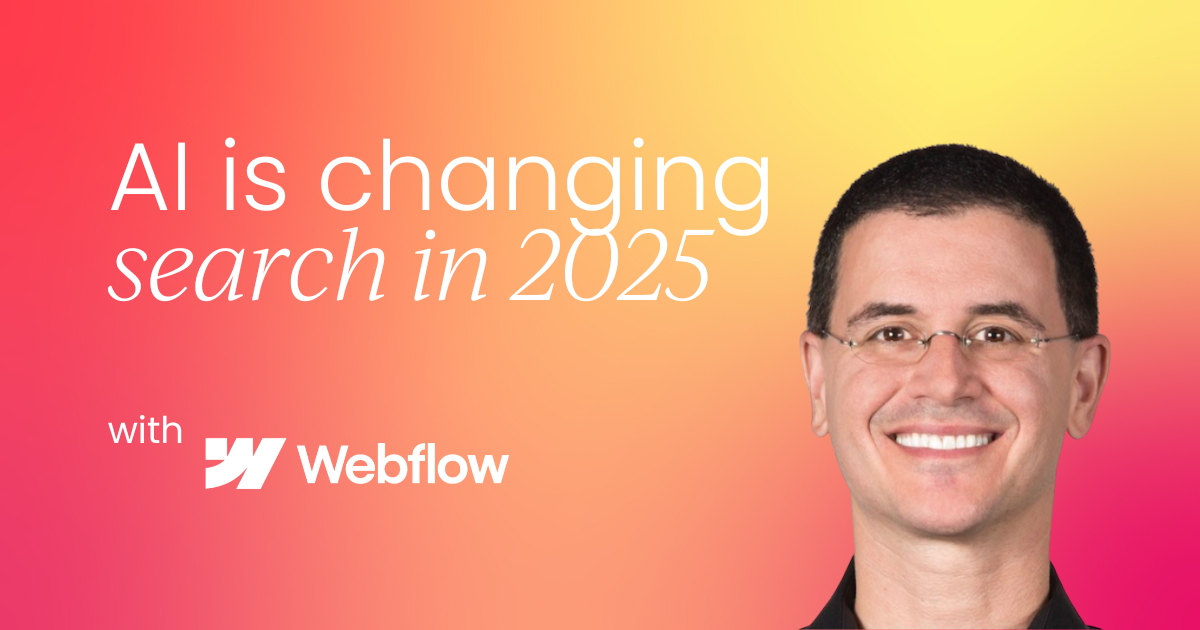
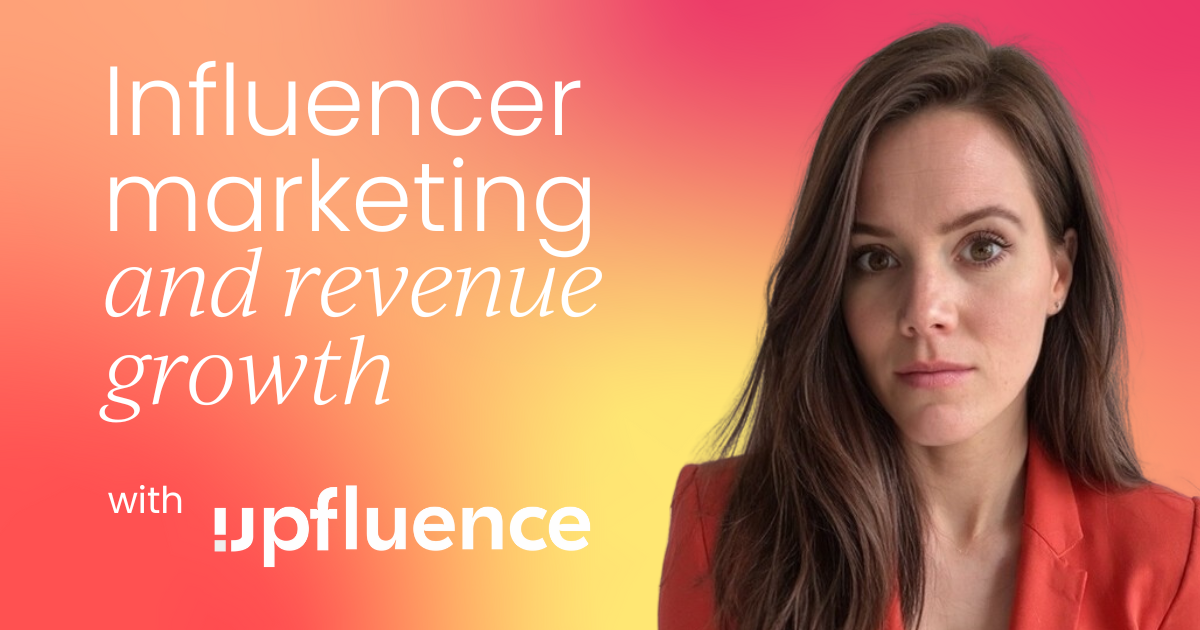
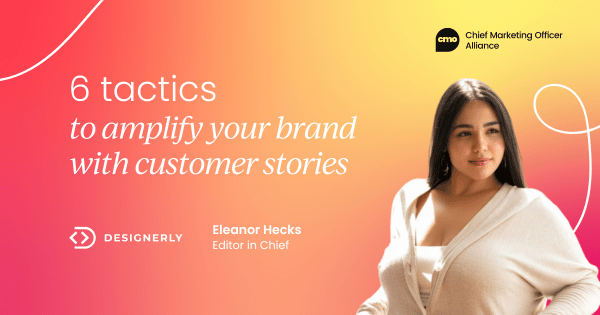




 Follow us on LinkedIn
Follow us on LinkedIn


